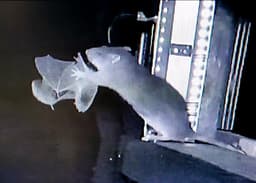Home / Science / Pyramid of Menkaure Hides Potential Second Entrance for Centuries
Pyramid of Menkaure Hides Potential Second Entrance for Centuries
10 Nov
Summary
- Researchers detect two air-filled voids behind the eastern façade of the Menkaure Pyramid
- Hypothesis of a second, long-forgotten entrance on the eastern side gains credibility
- Pyramid built around 2510 BC as tomb for King Menkaure, whose sarcophagus mysteriously went missing

In a remarkable discovery, researchers believe they have located the remains of a hidden entrance to the ancient Pyramid of Menkaure in Egypt, nearly 4,500 years after its construction. The Pyramid of Menkaure, the smallest of the three main pyramids at the Giza complex, was built around 2510 BC as the tomb for King Menkaure, whose sarcophagus mysteriously went missing centuries ago.
Using advanced scanning techniques like radar, ultrasound, and electrical resistivity tomography, a team of experts from Cairo University and the Technical University of Munich have detected two air-filled voids behind the eastern façade of the pyramid. These anomalies, located at different depths, provide strong evidence to support the hypothesis of a second, long-forgotten entrance on the eastern side of the structure, facing the Nile River.
The researchers note that the granite blocks in this area appear unusually smooth, similar to the polished stones found at the pyramid's primary northern entrance. This suggests the possible existence of another entryway that has been concealed for millennia. While further investigation is needed to confirm the findings, the team is optimistic that this discovery could lead to the uncovering of undiscovered chambers or passages within the iconic monument.




